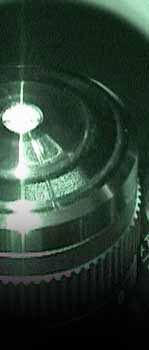蛇毒蛋白Rhodostomin與血小板之交互作用
Rhodostomin
(also called kistrin), which was purified from Malayan pit
viper (Calloselasma rhodostoma), is a potent anticoagulant.
Most anticoagulants identified so far appeared to be the antagonists
of fibrinogen receptors, integrin aIIbb3
(GPIIb/IIIa), which mediated activation and biological functions
of platelets (Teng and Huang, 1991). They were termed "disintegrin
family" for their inhibitory activities on integrin functions
and fibrinogen-mediated platelet aggregation (Gould et al.,
1990).
Platelets play key roles in many important physiological functions
such as hemostasis and thrombosis. Under physiological conditions,
platelets need to be activated by a variety of extracellular
molecules released from damaged cells, such as ADP or thrombin
before fibrinogen can induce cell transformation. However,
platelet activation and transformation events were observed
when the blood cells interacted with GST-rhodostomin treated
substrates, which was, to our knowledge, the first case in
which a disintegrin could mediate both activation and morphogenesis
effects. These cell transformation events seemed to involve
calcium influx and protein phosphorylation. In the demonstration
below, I present the calcium spiking of platelets after they
attach to the rhodostomin-coated substrate.
|
 
|
The
calcium spiking observed when platelets were attached
to the substrate coated with rhodostomin (left) and
the pseudo color applied to the fluorescent signal (right).
Before being plated to the substrate, the cells were
treated with Calcium Green-1 as a result that the fluorescent
signal is proportional to the intracellular concentration
of calcium ion. Here we can observe the spreading of
the calcium ion from the internal storage of the cell.
(Collaborated with Yong-Shyang Yi in Dr.
Chi-Hung Lin's lab.)
|
|

|
The
calcium spiking of a platelet attached to the rhodostomin-coated
substrate observed by Side View
Technology. The cell was trapped and plated precisely
by the optical tweezers and
simultaneously observed by the Side
View Technology. This combined technologies allows
us to study the spreading of calcium ion in the initiation
of the plate activation on the z-axis. (Collaborated
with Yong-Shyang Yi in Dr.
Chi-Hung Lin's lab.)
|
Links:
Updated
6/13/2013. Copyright© 2001 Jin-Wu
Tsai. All rights reserved.
|
